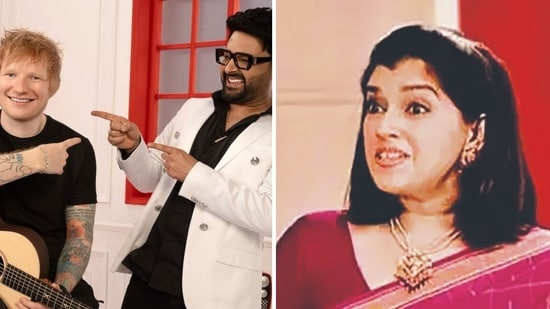Television for long has been hailed for its wider reach as compared to big screen. And with the advent of streaming platforms, in no time the web world became everyone’s favourite medium. Is that the reason we have seen several TV shows in the recent past made a switch to the OTT? Or is it because the show makers on the small screen wished to try a whole new world of uninterrupted storytelling and explore an unchartered territory? But are the audiences happy? Do takers of the content on small screen equally comfortable with the subscription based models of the web platforms? It seems to be a tricky situation still, and the latest example of comedian-actor Kapil Sharma’s show is proof. While the show moved from TV to Netflix under a new title and with immense hype, the initial lukewarm response got everyone thinking if the move was really as smart as makers thought it to be.

In the past, fiction shows such as Jamai 2.0, Qubool Hai 2.0 have also taken the digital route after being on air on TV for quite some time. However, it seems like OTT, which is believed to be a single-person-viewing experience, might demand more customised content to get its subscribers fully on board.
Renowned television producer Rajan Shahi, known for producing shows including Anupamaa, feels that a shift to OTT is only favourable for a TV show if the story is not too elaborate.
“It depends on the kind of show, and if it’s a big story to tell, the broadcaster would make a different season of the show. It just happens now that the story is not very important, but it’s a big brand. So, shifting to OTT can become a big strategy because if you feel that you don’t have a daily soap story to sustain for long, but the brand and names associated with the show are popular, then it’s an excellent move to make,” he says, citing example of Rupali Ganguly-starrer Anupamaa, and adding, “I think this is the only example in the world, where an existing daily soap show, with the same actors and team, we had created a brand Namaste American for the web, so there was a lot of curiosity.”
Also Read: Chandan Prabhakar on The Great Indian Kapil Show getting a mixed response: The team should focus on audience feedback
Popular sitcom Sarabhai Vs Sarabhai aired on television for several years before it moved to OTT and its popularity grew ten fold with new audiences coming on board mixed with nostalgia of the old ones.
The show’s producer, Jamnadas Majethia, decodes the big difference between television and OTT and calls the show way ahead of its time.
“Sarabhai Vs Sarabhai worked on TV, then it travelled on YouTube and people watched it, then social media happened, and gradually it became so big that it moved completely to streaming, and stopped airing on TV. When Disney + Hotstar hosted the first season, it had such amazing writers and iconic actors, and when it’s comedy, right writing, casting and execution is everything. The shelf life of the show worked with OTT’s grammar, as it made people watch it again,” explains Majethia.
That being said, a sitcom like Sarabhai Vs Sarabhai and a comedy show like The Great Kapil Sharma Show can’t really be painted with the same brush, and would need a bit of tweaking for the OTT audience.
Jinesh Shah, Head- Series, Roy Kapur Films weighs in and says, “Non fiction or reality shows like Kapil’s show, which are situational and episodic, can seamlessly transition to OTT platforms due to their self-contained episodes and flexible format. However, the next trend to watch for will be longer-format fiction shows of 50-100 episodes with daily drops on the platform, featuring better production values and definitive end compared to current soaps on satellite channels.”
Here, it’s important to note that the difference of genre can also an important role in deciding the fate of a show on a different medium.
“Talking of shows moving from television to streaming platforms, there has to be tweaking of the format per se, depending on the genre. If it’s fiction, then it has to be in a different format completely.
Television follows a very different structure and OTT functions differently,” says director-writer Suparn S Varma, the writer and director of Rana Naidu, Janasheen (2003) and Acid Factory (2009), as he explains, “On OTT, the storytelling is more dense, more compact with different characters. On the other hand, in non-fiction, it’s easier to transcend. The way content is created for TV and OTT is different. That merger of two conferencing mediums needs to be taken care of and woven in smartly.”
